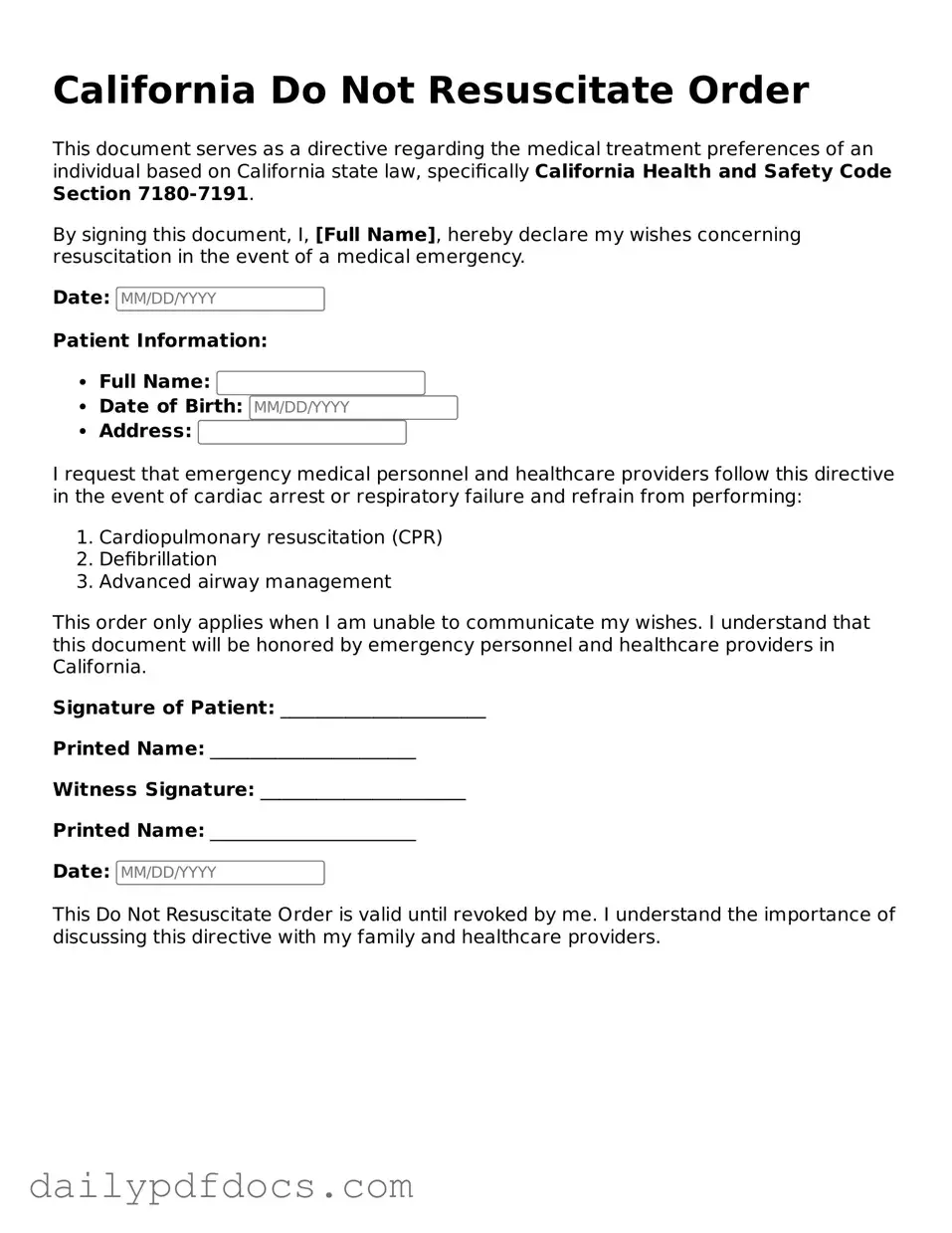What is a California Do Not Resuscitate Order (DNR) form?
A California Do Not Resuscitate Order (DNR) form is a legal document that allows individuals to refuse cardiopulmonary resuscitation (CPR) in the event of a medical emergency. It is designed for patients who have a terminal illness or a condition that significantly limits their ability to live independently. The DNR form communicates the patient's wishes to medical personnel regarding resuscitation efforts.
Who can complete a DNR form in California?
In California, any adult who is capable of making their own medical decisions can complete a DNR form. This includes individuals who are of sound mind and understand the implications of their choices. Additionally, a parent or legal guardian may complete a DNR form for a minor. It is important that the individual signing the form fully understands their medical condition and the consequences of not receiving resuscitation.
How is a DNR form created and signed?
The DNR form must be completed and signed by the patient or their authorized representative. The form requires the signature of a physician who must assess the patient’s medical condition and agree with the decision. It is advisable to discuss the decision with healthcare providers before signing the document to ensure that all parties are informed and in agreement.
Where should a DNR form be kept?
The DNR form should be kept in a place that is easily accessible to medical personnel, such as a hospital or care facility. Many individuals choose to keep a copy in their medical records, at home, or with their primary care physician. It is also recommended to inform family members and caregivers about the location of the document to ensure that it can be readily presented in an emergency situation.
Can a DNR order be revoked?
Yes, a DNR order can be revoked at any time by the patient or their authorized representative. To revoke the order, the individual should destroy the original DNR form and notify their healthcare providers of the decision. It is important to communicate any changes in wishes to ensure that medical personnel are aware of the current directives.
What happens if a DNR form is not available during an emergency?
If a DNR form is not available when emergency medical services arrive, standard resuscitation procedures will typically be followed. Medical personnel are trained to provide care based on the immediate situation. If the patient has previously expressed their wishes regarding resuscitation, family members or caregivers can communicate this information to medical staff as soon as possible.
Does a DNR order apply outside of a hospital setting?
Yes, a DNR order can apply outside of a hospital setting, but it is essential that the form is properly completed and presented. In California, there is a specific version of the DNR form that is recognized by emergency medical services (EMS) for use in out-of-hospital situations. Individuals should ensure that they have the appropriate form and that it is easily accessible in case of an emergency.
Is a DNR order the same as a living will?
No, a DNR order is not the same as a living will. A DNR specifically addresses resuscitation efforts in the event of cardiac arrest, while a living will outlines broader healthcare decisions and preferences regarding medical treatment in various situations. Both documents serve important roles in advance care planning but address different aspects of medical care.
